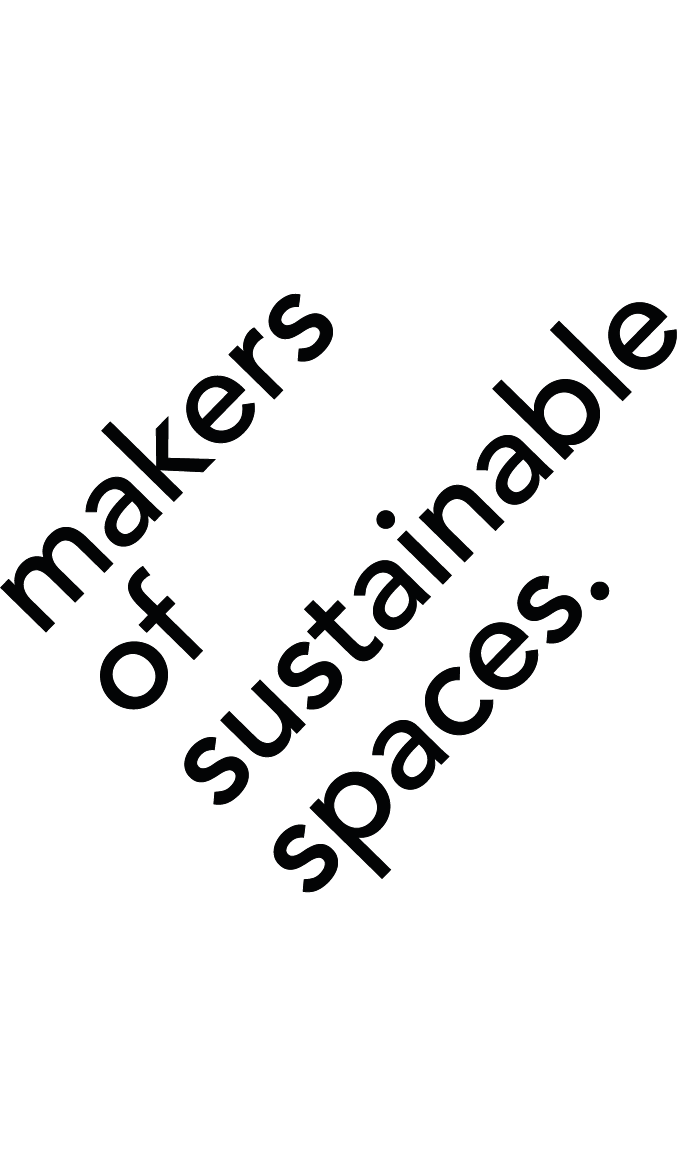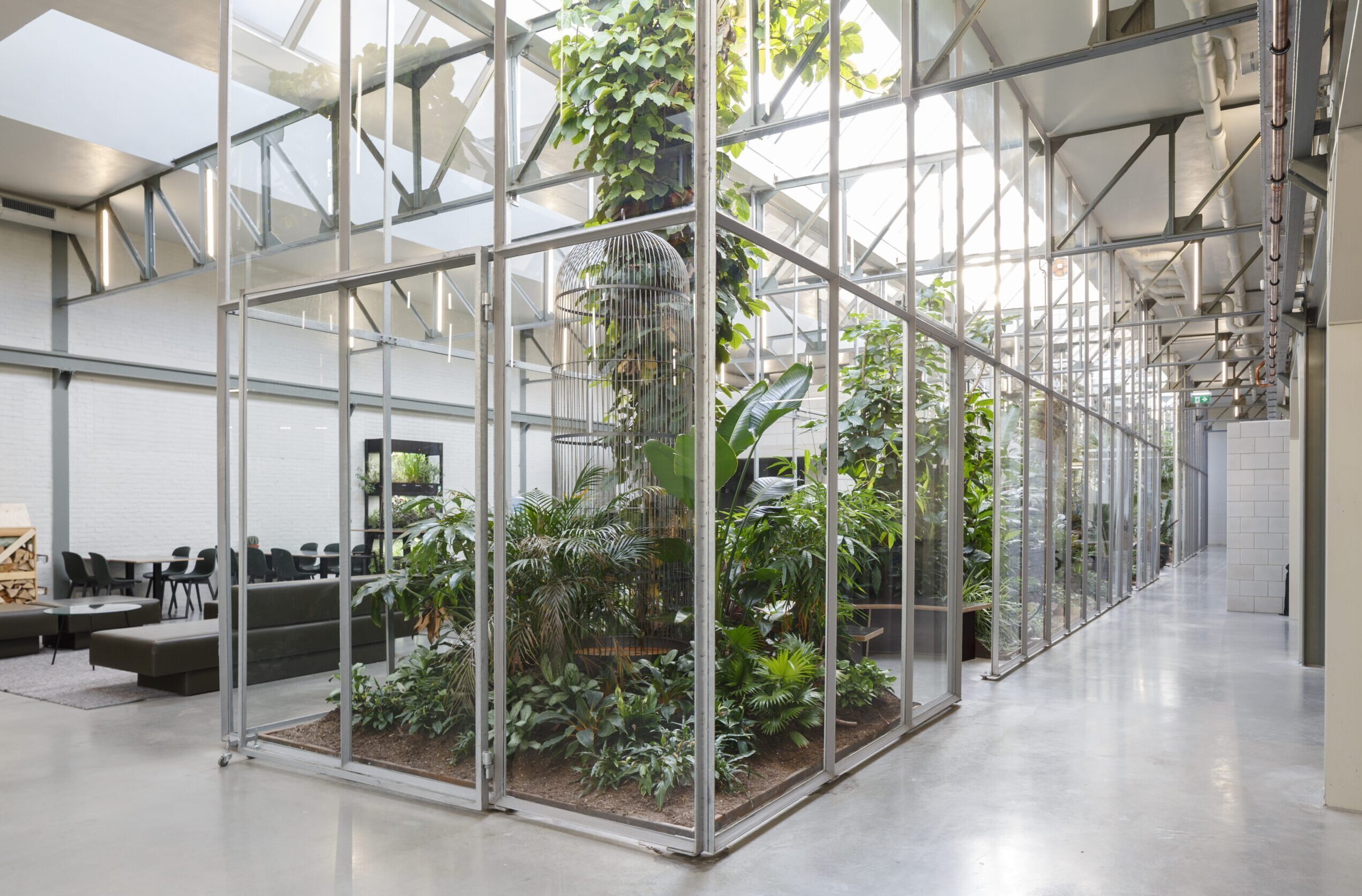



Author: Lauryn Burnes
Keywords: Biophilic design, AI and biophilic design, technology in architecture, nature-inspired design, smart building design, artificial intelligence in design, multisensory environments, indoor nature experience, MOSS Amsterdam, how AI supports biophilic design, nature-inclusive architecture with technology
Biophilic design incorporates nature into our living and working spaces to promote well-being, creativity, and a harmonious relationship with the environment. As humans continue to develop cities that infringe on the natural world, this approach to design is more necessary than ever, as it reconnects humans to our natural roots. Yet even in spaces that prioritize sustainability and aesthetics, nature-inclusive design comes with challenges. But what happens when we view these challenges as opportunities for innovation rather than roadblocks?
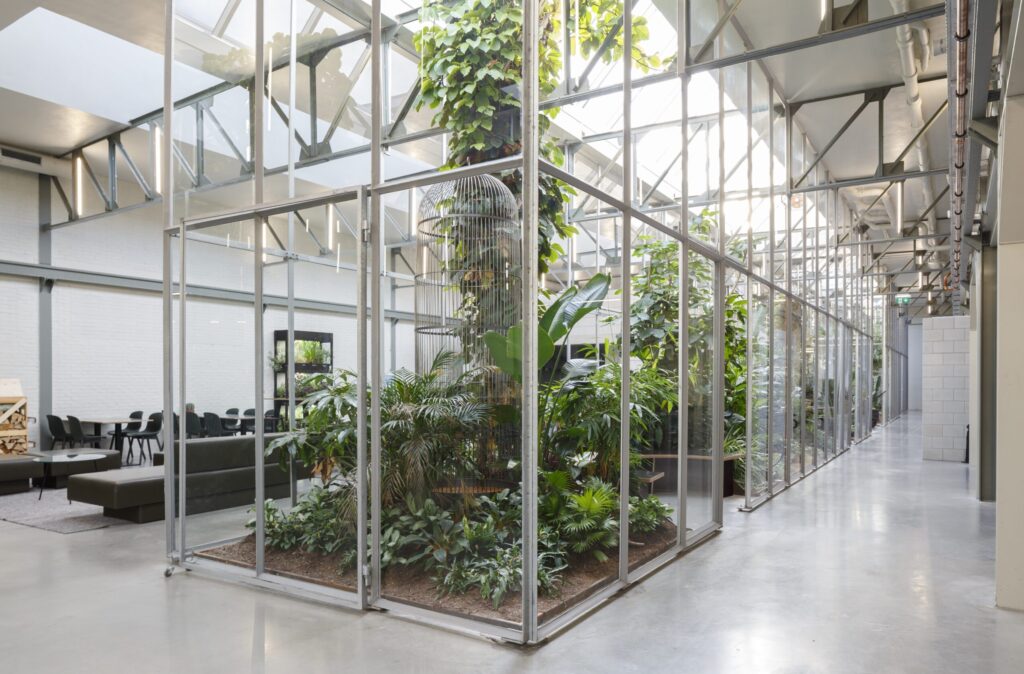

In a recent conversation with Shruti Rao, a PhD candidate at the University of Amsterdam, MOSS explored the exciting role that Artificial Intelligence can play in enhancing and expanding the reach of biophilic design— not as a replacement, but as a powerful support.
Shruti’s research focuses on how modern technologies like spatial audio and generative AI can provide embodied, multisensory, and emotionally resonant experiences of nature. In this blog, we explore some of the practical and philosophical challenges of biophilic design, understanding how developing technologies can help us meet and grow beyond them. Ultimately, we will come to view technology not as a substitution for green design, but as a supplement.
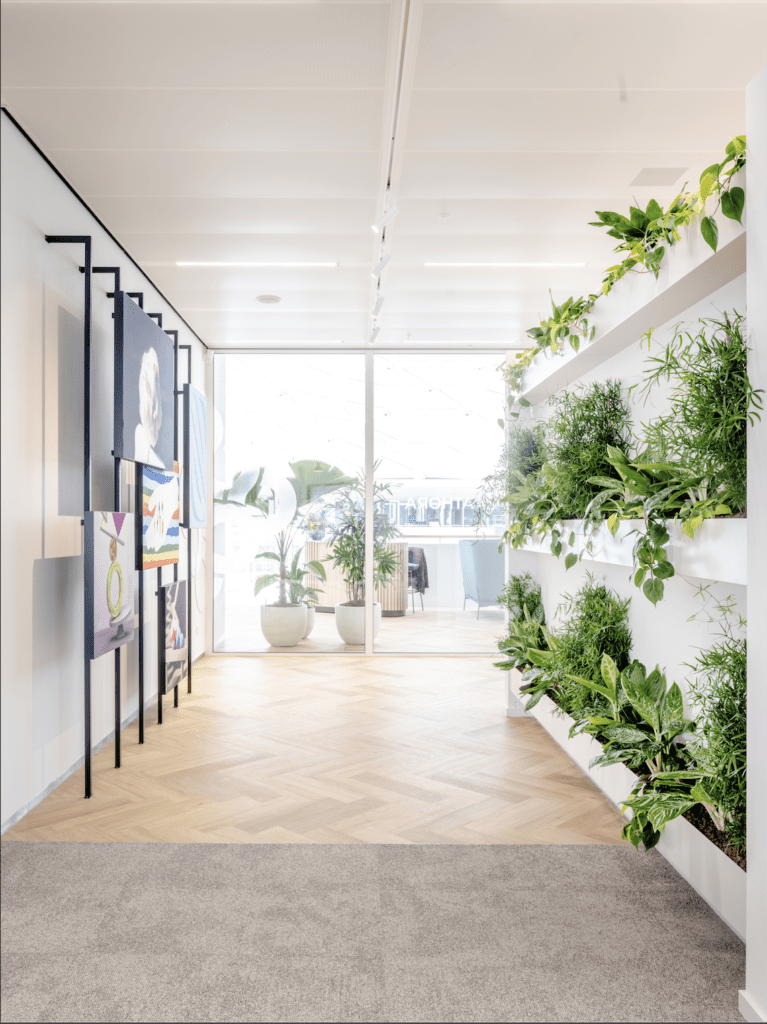

Nature-inclusive architecture is widely proven to boost well-being and productivity. So why isn’t it everywhere yet? One reason is maintenance. Plants are living beings that require water, light, space, and care. Without proper upkeep, some clients worry that plants might disrupt cleanliness or create micro-environments for biodiversity. In places like hospitals or offices where pristine conditions are essential, this is an understandable reservation.
But that is where MOSS comes in: designing green systems that are sustainable, integrated, and low-maintenance. We use smart irrigation, robust planters, and strategic spatial planning to ensure our clients enjoy hassle-free greenery. Yet even with great design, not every space can support extensive living greenery.
In these situations, we can look towards new technology for support. Shruti explained how technological tools can supplement real greenery by enhancing the experience of nature in challenging environments. Her proposal actually extends the reach of biophilic design rather than replacing it:
At MOSS, we believe these tools can complement physical biophilic elements, making them more impactful, resilient, and adaptable to the needs of our clients. When thoughtfully integrated, tech can reduce the strain on maintenance while strengthening the overall experience.
At first glance, nature and technology may seem to be at odds with each other. Nature is wild, organic and has ancient roots deeper than human history, while technology is structured, artificial, and exists as a result of human development. There is an obvious contradiction here, and modern design trends tend to favor sleek minimalism, whereas natural systems are sprawling and deeply complex.
But this tension doesn’t need to create a divide. In fact, some of the most compelling design outcomes emerge when these aesthetics are combined. At MOSS, we like to blend the clean, futuristic feel of modern architecture with the rich textures and forms of the natural world — making spaces feel both innovative and alive.
Shruti’s research aligns with this vision. Rather than using tech to merely simulate nature, she uses technology as a bridge between ancient and modern. This approach helps people tune into the subtle cues that make nature feel alive and meaningful.
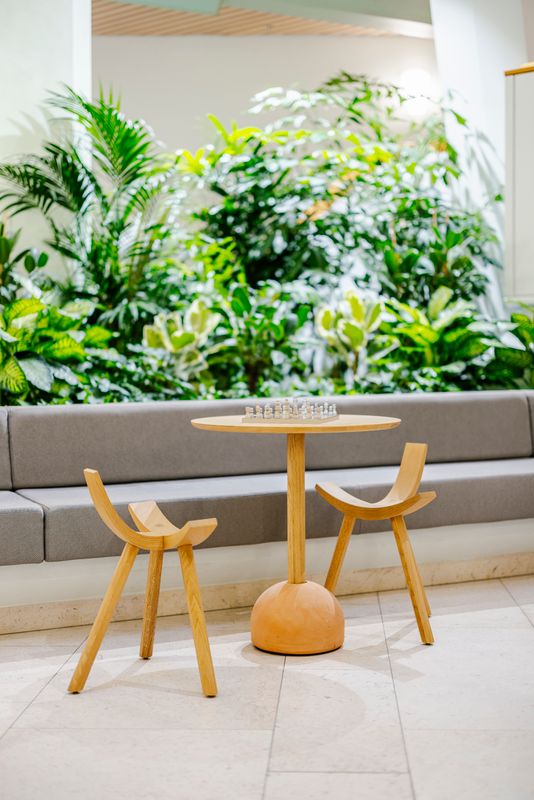

By embracing this kind of synergy between nature and technology, we can shape environments that fuse the best of both worlds. Therefore, MOSS sees tech not as a threat to biophilic design, but as a tool that can help amplify it into a multi-sensory experience.
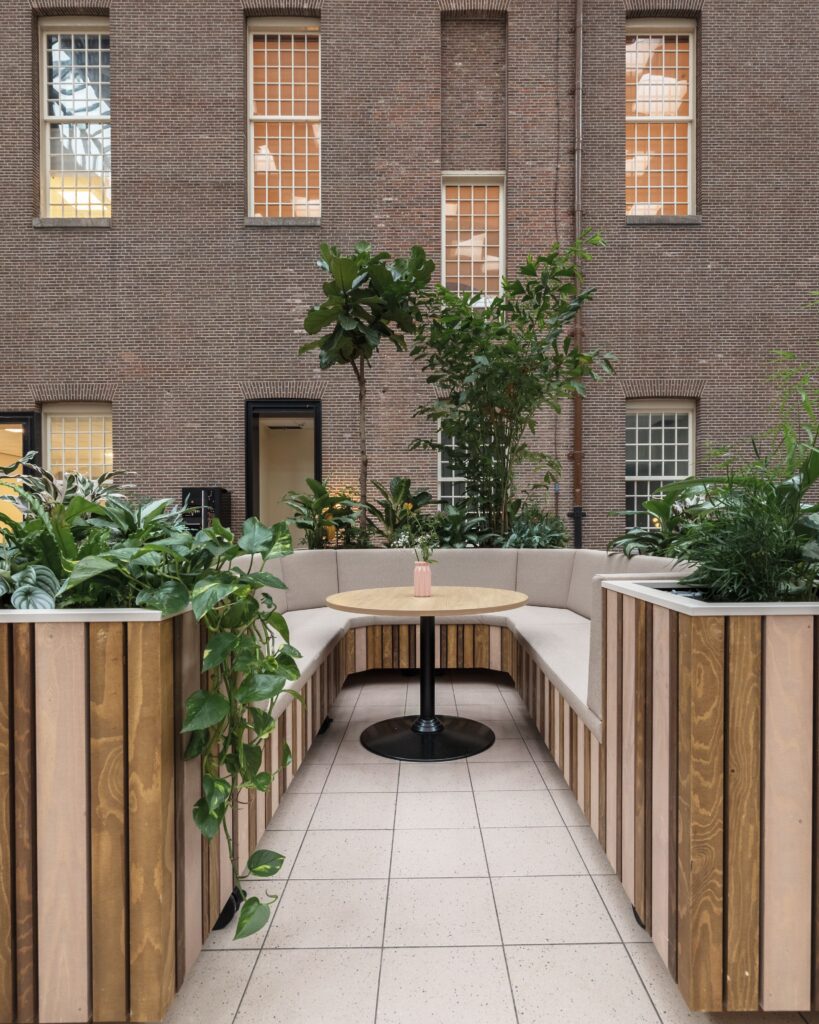

Too often, biophilic design is seen as a luxury: something reserved for high-end offices or tech campuses. But what about schools, care homes, or refugee centers?
At MOSS, we’d like to change this narrative. We believe all urban dwellers deserve access to nature, regardless of their socio-economic position. That’s why we pursue projects with a strong social impact, such as Amsterdam’s municipal buildings and public health facilities like Amsta. We also apply our expertise to educational sessions, the field of research in biophilia and biophilic design, and philanthropy projects to benefit those who cannot afford these restorative environments.
Technology can also help bridge this gap. Shruti’s headset-based nature walks, for example, require only a hallway and a set of headphones. These kinds of solutions offer scalable ways to bring restorative experiences into underserved environments.
By pairing this kind of scalable tech with living systems where possible, MOSS can extend the reach and impact of biophilic design — not replacing nature, but making its presence possible in more forms, for more people. The ultimate goal here is to remind users of their connection to nature, which will hopefully drive them to protect and support preservation initiatives in their communities and beyond.
When people think of indoor nature, they often picture green walls, forest screensavers, or potted plants. But real nature is multisensory— we hear it, feel it, smell it. Relying too heavily on visual cues can flatten the experience of nature. As Shruti pointed out, virtual windows and decorative green screens often feel artificial or underwhelming because they fail to engage the full body. This is another opportunity for technology to shine as an enhancer for the nature-inclusive spaces we have already built.
Shruti’s work invites designers to think beyond the visual and embrace a more layered sensory palette using developments in AI technology:
Embodied engagement: Her installations use movement and responsiveness to restore our innate “body-first” awareness— something that’s often lost in static, screen-based environments.
Sensory layering: Shruti’s insights affirm what MOSS already practices: using airflow, texture, temperature, and natural materials to create truly immersive environments.
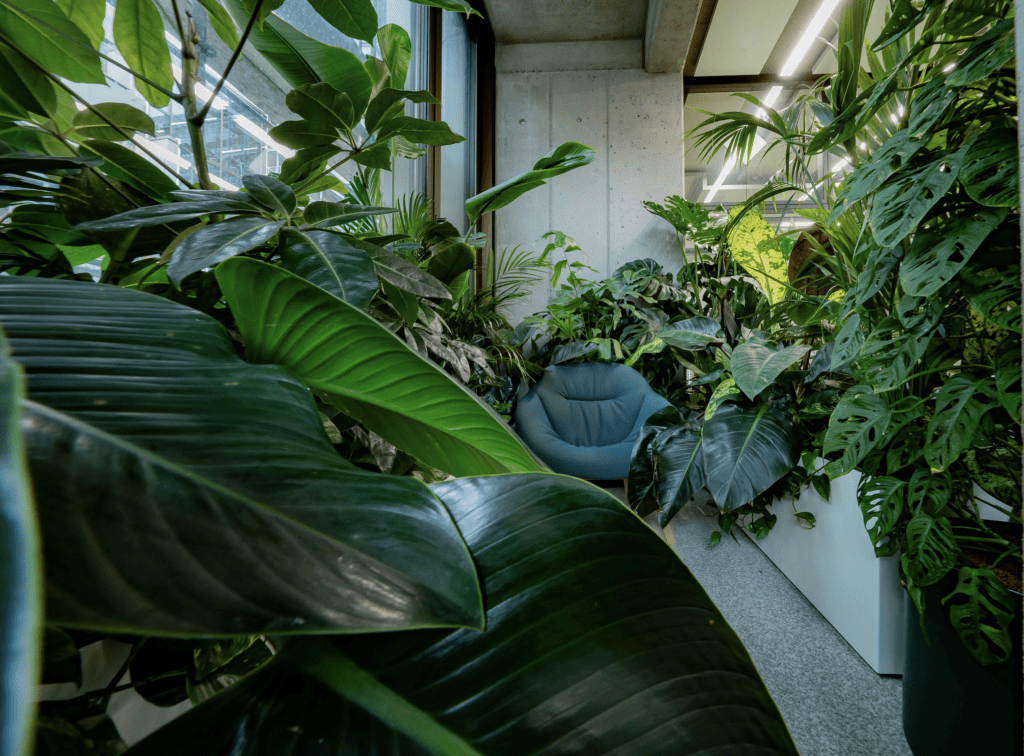

Technology can help us simulate and support these multisensory cues where living elements aren’t feasible. This approach enhances the emotional richness that makes nature so restorative, while adding to the visual elements that already exist.
Biophilic design isn’t without its challenges— but these challenges are also opportunities. With the thoughtful integration of technology, we can make nature-inclusive design more accessible, more engaging, and more adaptable than ever before.
At MOSS, we don’t see AI or digital tools as competition for living systems. We see them as creative collaborators that can help us deliver deeper, more holistic biophilic experiences across all kinds of spaces. Shruti’s research shows that the future of biophilic design lies not in choosing between nature and innovation, but in bringing them together ethically and organically.
Whether through sensor-activated soundscapes, generative lighting, or simply smarter maintenance systems, technology can help us expand the reach of biophilic design, not replace it. MOSS is excited to explore this future, where every space —from offices to care homes— can benefit from the healing power of nature, supported by the best of what modern design and research have to offer.
The future is not tech versus nature. It’s tech for nature –- and people.


